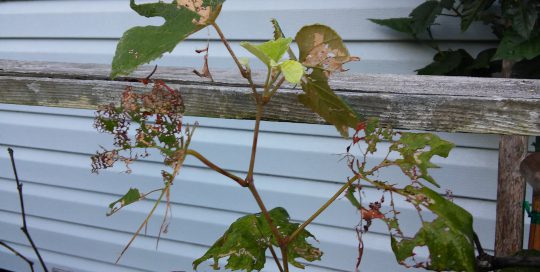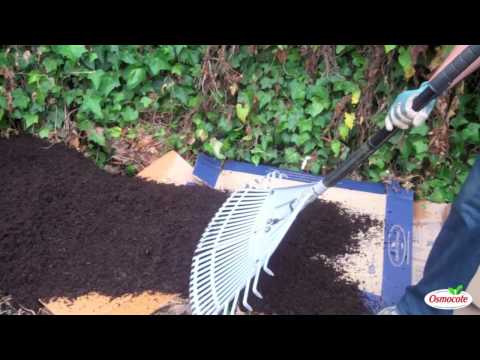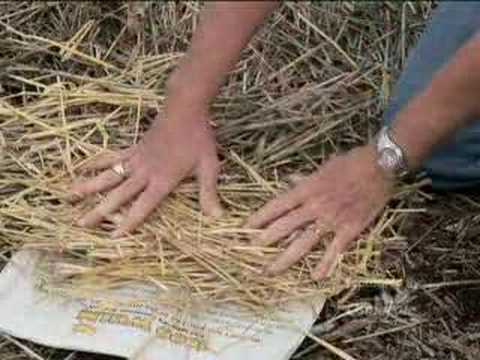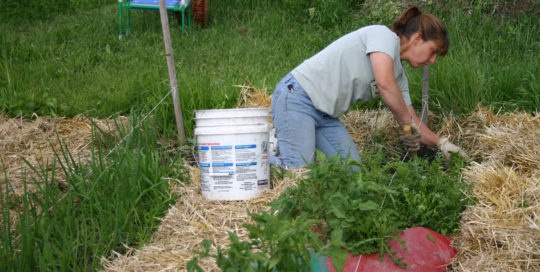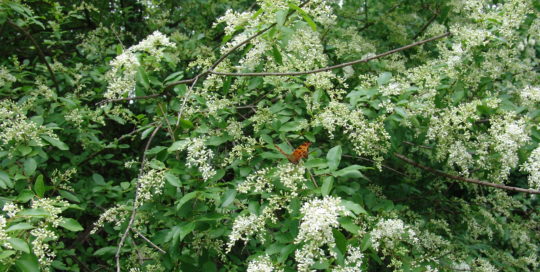Don’t Feed Your Weeds
By Jean Starr
A sensible garden adage defines a weed as any plant you don’t want. By mid-summer, there seem to be dozens, and they’ve all come to live in your garden. But not all weeds are created equal. Some crawl along the top of the soil and are easy to pull up. Others send down roots that are more tenacious. Still others have roots that reach down several inches and need some serious tools. But no matter how they grow, they’re stealing resources. If you feed your plants, it’s a guarantee the weeds are helping themselves to the fertilizer.
Weeds found in the lawn will readily grow into your flower beds, foundation plantings, and vegetable garden. Once they’ve made themselves at home there, eradicating them is trickier because they’re so close to your desirable plants. Each year it seems a new mass of weeds crop up in my garden. I’ve gotten rid of garlic mustard, but several others have arrived to take its place. I have enough weeds to fill a dumpster. Here are their stories:
Creeping Charlie (Glechoma)
Everyone has creeping Charlie. It’s a pretty little thing, probably the reason people think it won’t become an issue. But this scallop-leaved oppressor creeps along (hence its common name) and takes hold of any bare spot of soil, traveling unnoticed until it forms a thick, smothering mass. If you decide to remove it by hand, make sure the soil is moist, and try using the CobraHead weeder. It’s a great tool for getting underneath the flexible stems.
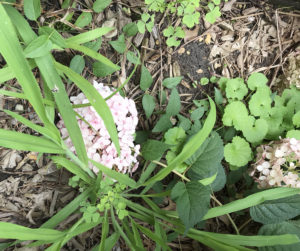
Nutsedge: (Cyperus esculentus)
Nutsedge stands out as a slender, bright yellow-green grass that rises ever upward, looking innocuous until, seemingly overnight, it’s joined by a militia of look-alikes that threaten to infiltrate the garden. This was my first memorable weed, turning up in a patch of lawn that greeted me each day as I emerged from my car after work. Leaving my purse in the car with my heels, I’d hunker down and pull it strand by strand, straight up and slowly so all the roots would come with it. It was an addictive exercise I hated to lose once the sedge was gone. Nutsedge gets its name from the tiny, bulbous tubers that cling to its roots. The sedge part of its name comes from the fact that it is a sedge and not actually a grass.
Dayflower (Commelina):
I’ll admit to being dazzled by its flowers. Brilliant blue and more abundant than anything I’d planted on purpose, I gave dayflower a pass for a whole season. I didn’t even know its name when I decided it needed to go. Weed killer was out. It had congregated in one area near a Clematis at the base of the pergola, winding its way through to the rest of the perennials. Its stems are segmented and break easily as you pull, so you really have to get down low to deal with this weed. The most success is found through hand-pulling, but make sure you get the roots, which are pretty easy to dislodge.
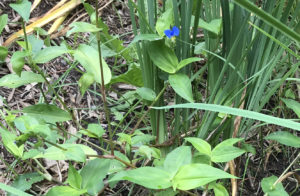
Oxalis or wood sorrel
According to Rodale’s “Garden Insect, Disease & Weed Identification Guide” by Miranda Smith and Anna Carr, wood sorrel (Oxalis stricta) is a perennial common to acid soils in shady locations. But wood sorrel obviously doesn’t read much. This delicate-looking usurper doesn’t mind a bit of sun, especially if it gets a start in a shady spot. Its best bet for providing full coverage in your garden is by seed. I’ve pulled wood sorrel out of my garden was four feet tall. It will just keep growing, flowering and dropping seed all season long until it’s stopped. As crowded as my garden is with plants of all kinds, I hadn’t noticed it until late August.
Thistle:
As far as I know, only two types of thistle reside in my garden. Both grow to enormous proportions if you don’t catch them early. The one called Sonchus asper also goes by the tongue-twisting title: spiny sowthistle. It doesn’t look that prickly, and it will skulk along the ground if it has to under cover of bulky perennials until you notice it. I caught a whopper that had extended its gnarly-stemmed self through the peony patch.
The more common and easily recognized thistle is commonly referred to as Canada thistle (Cirsium arvense). It tends to grow upright, making it easier to find among shorter garden plants. If you missed it during spring weeding, it will make itself known in late summer—just when its root system is so firmly lodged you’ll need the big shovel to deal with. As with the spiny sowthistle, this one requires gloves.
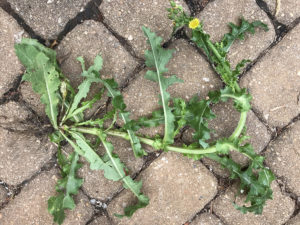
WEEDTIPS
- As with all weeds, its best to get them before they flower so they don’t form seeds.
- If you decide to pull them by hand, give the soil a good watering so the moisture extends at least an inch into the soil. The roots are much easier to dislodge from moist soil.
- Cover the newly weed-free area to keep the weeds at bay for a season or two. I’ve used cardboard, and even old carpets that have lost their rubber backing.
- Don’t compost the weeds unless you want a weedy compost pile.
- Learn more about weeds at org, compiled by The University of Georgia – Warnell School of Forestry and Natural Resources, College of Agricultural and Environmental Sciences – Department of Entomology, Center for Invasive Species and Ecosystem Health, Weed Science Society of America and the USDA Identification Technology Program
Like death and taxes, if you have plants, you will have weeds. And the hardest part about dealing with them is to identify them before they take over your garden. The ideal time is spring, but if you’re like me, spring priorities focus on planting, not pulling. If you’ve left your weeding until now, you will be battling the colossal and the rampant. But at least their easier to locate.


